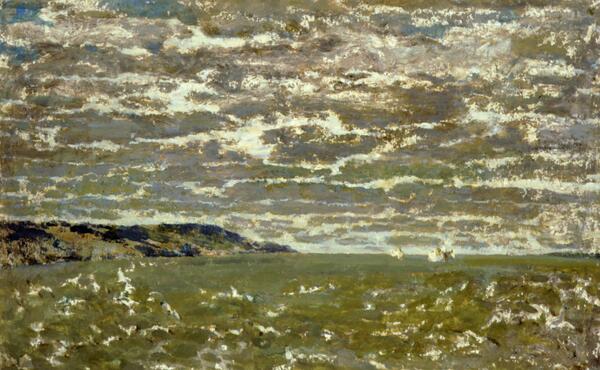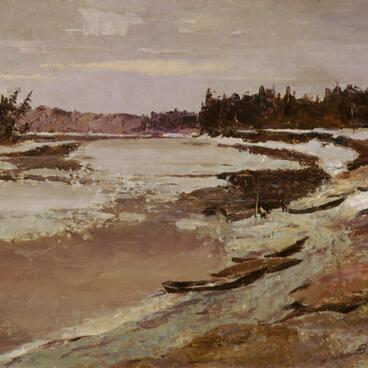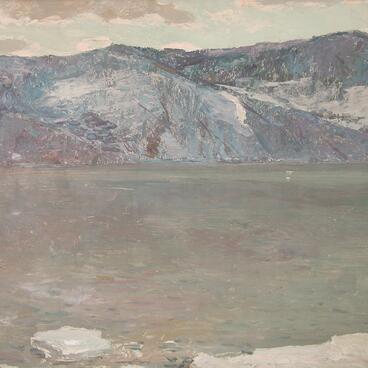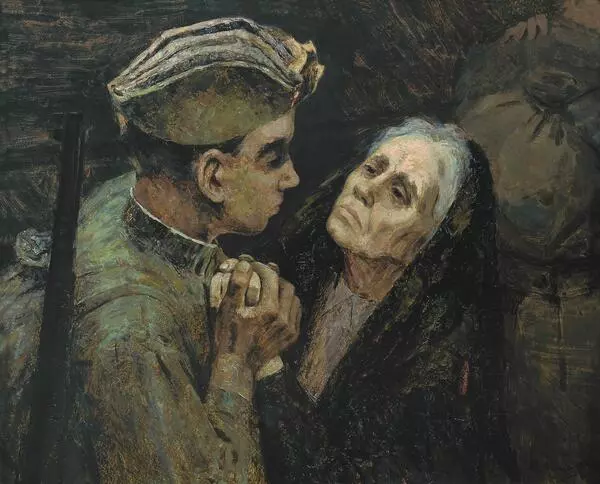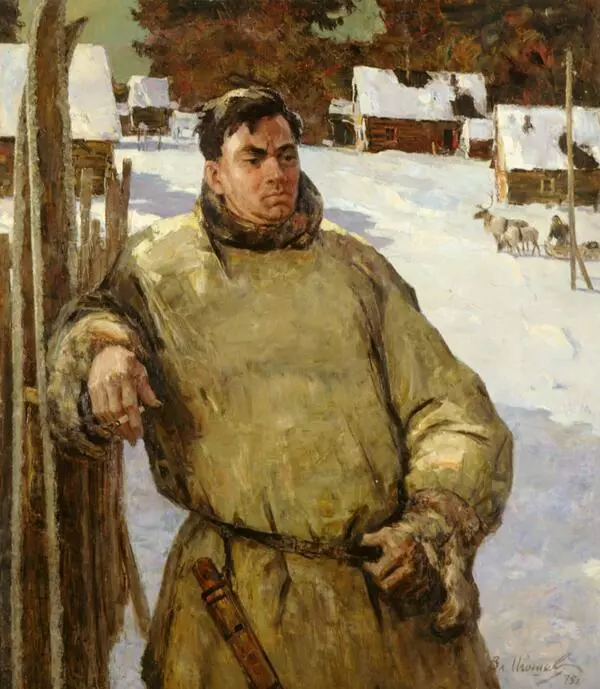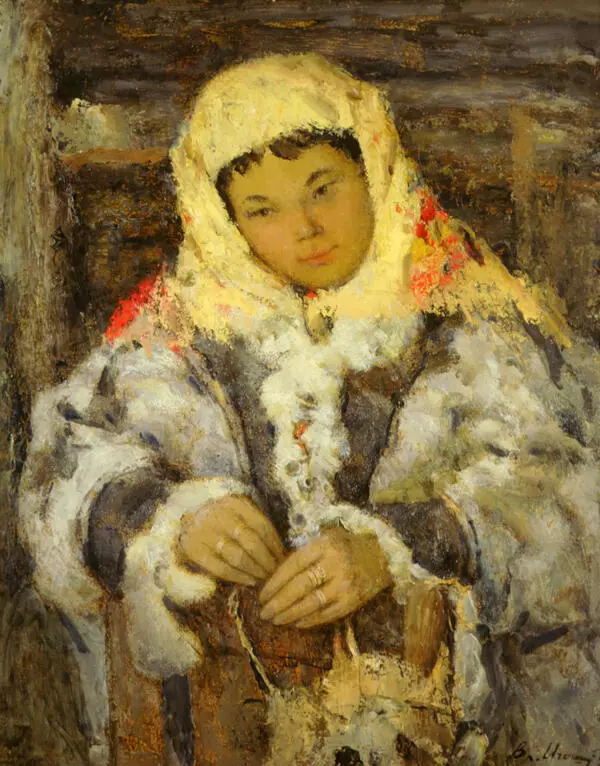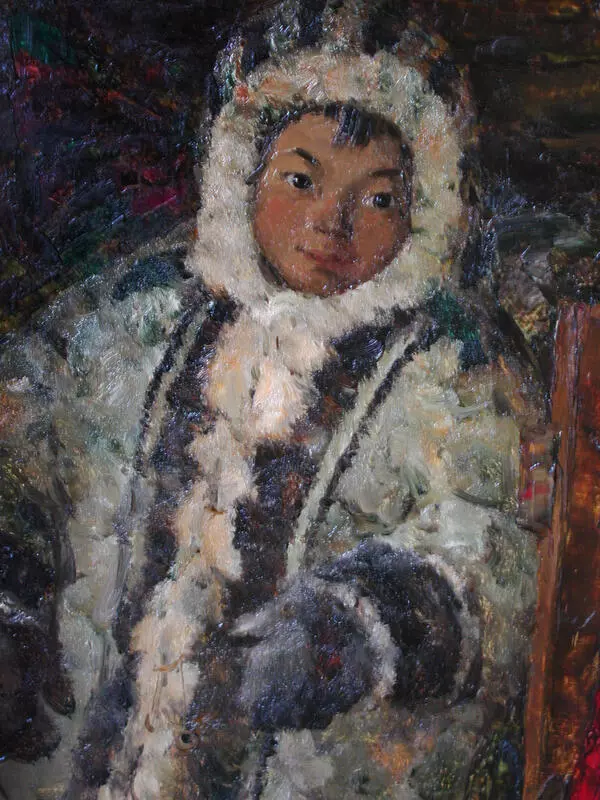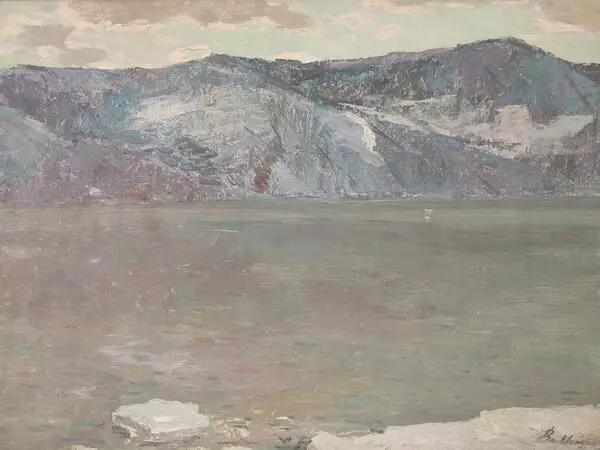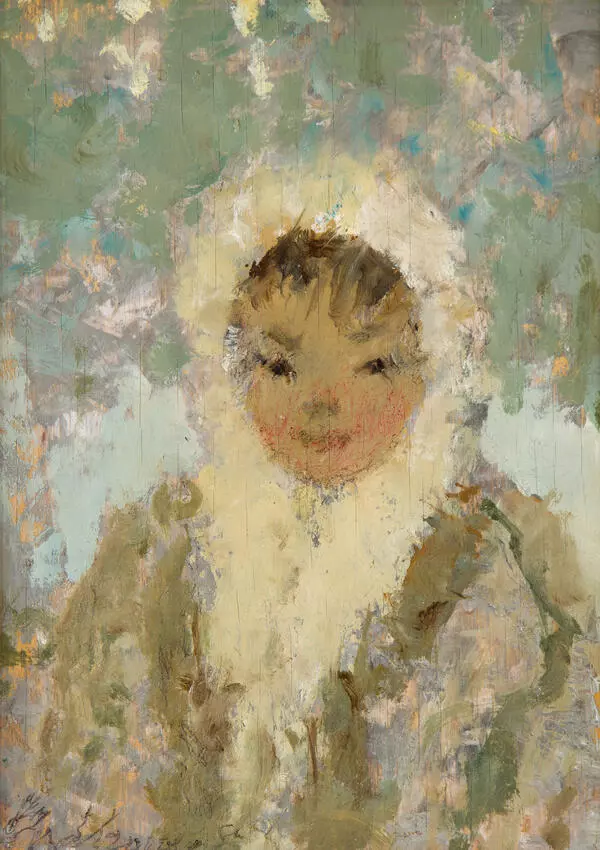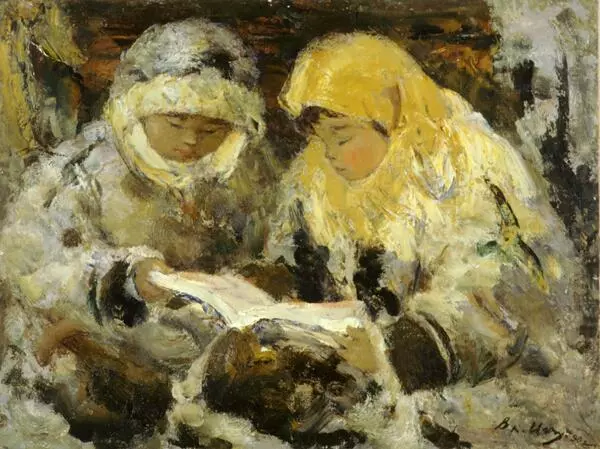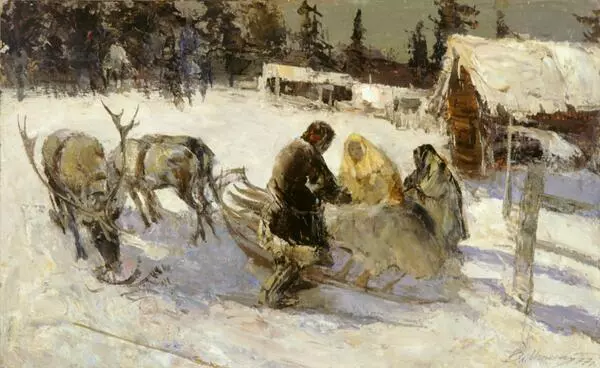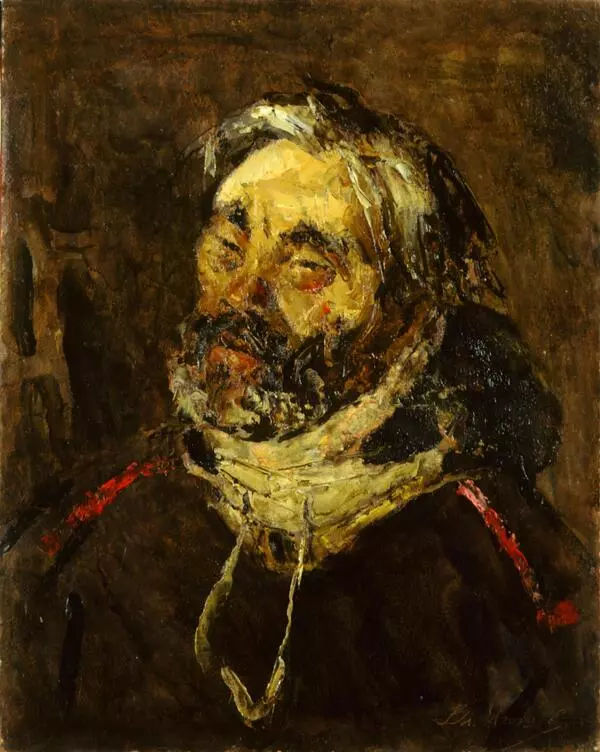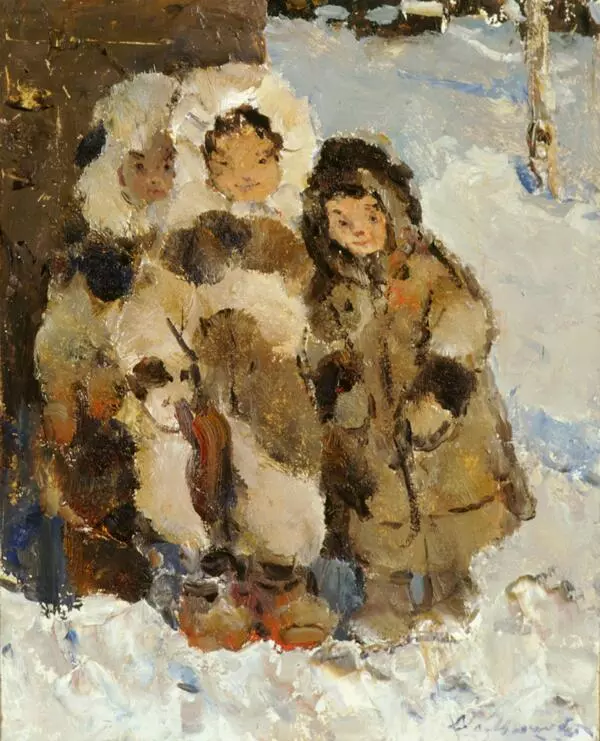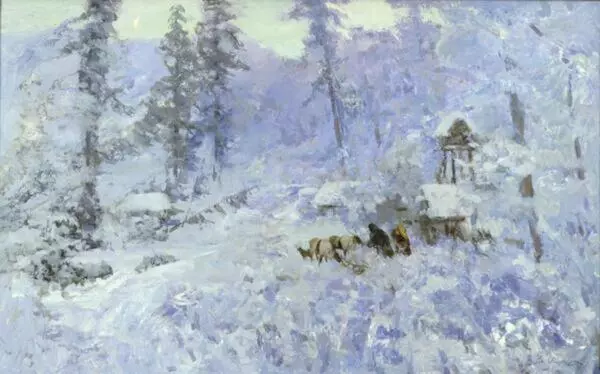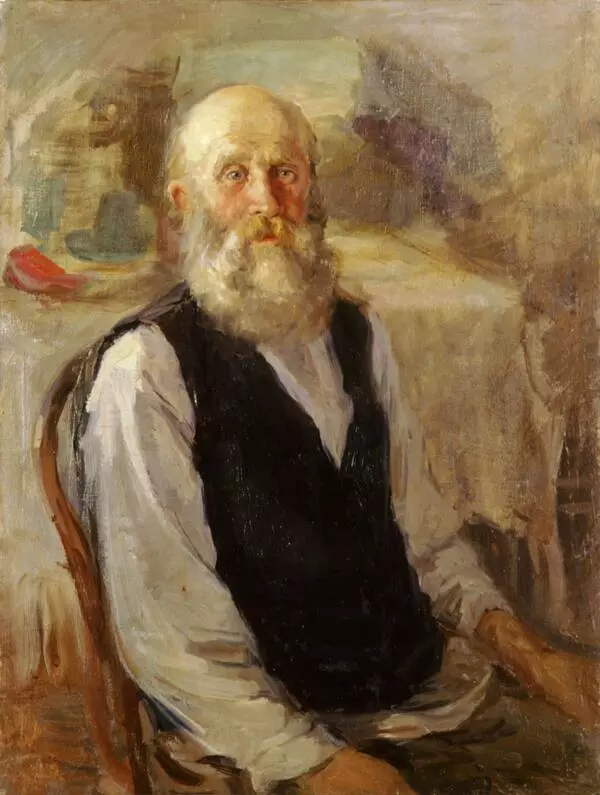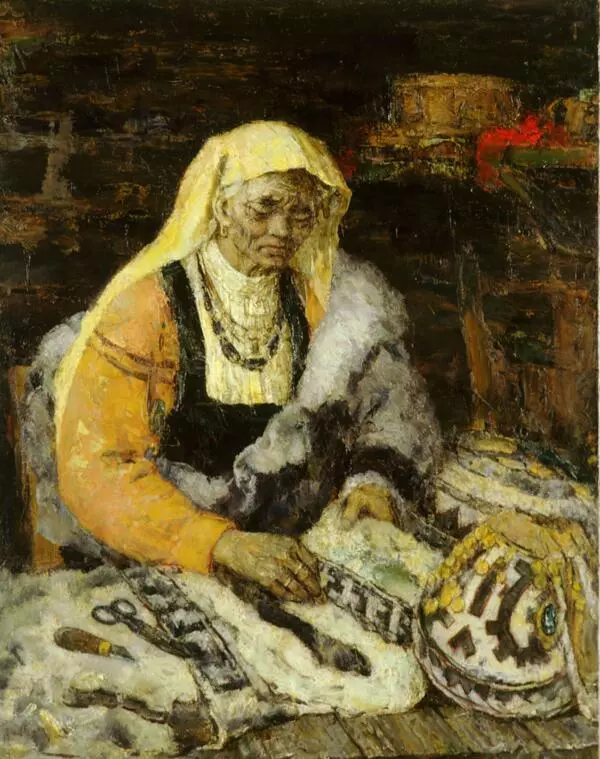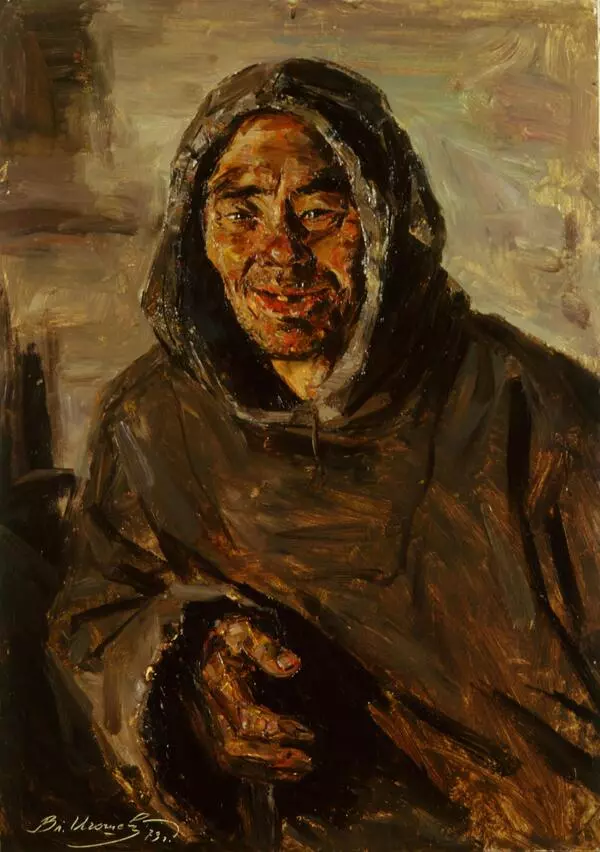Vladimir Igoshev was born on October 28th, 1921 in Bashkiria. Since his early years he was into painting, and after high school he entered the Ufa College of Arts.
During the Great Patriotic war, from 1941 till 1943, Vladimir Igoshev served in the army. He was seriously wounded at Stalingrad and spent much time in the hospital. Having returned to Ufa, in spite of his health condition, he continued to work on his paintings. In 1943 Igoshev’s first solo exhibition with around 60 of his paintings was organized.
In 1944 Igoshev went to Moscow and enrolled at The Surikov Art Institute. Later he moved to the Urals, where he gave painting lessons.
In 1954 Vladimir Igoshev visited Khanty-Mansi Autonomous Okrug for the first time. Here he explored the traditions of the indigenous peoples. Inspired by the northern beauty and its heroic inhabitants, he painted a series of paintings including Suevat Paul’and Stepan Kurikov. Later they were selected for the All-Union Art Exhibition in Moscow. The artist became famous for his landscapes and portraits dedicated to the people and nature of Khanty-Mansi Autonomous Okrug. In two years his solo exhibition was organized in Moscow.
In the following years Vladimir Igoshev often visited the North. In 1965 he was awarded the title of the People’s Artist of the RSFSR and academic rank of professor. Works by Igoshev were acquired by the biggest country’s museums and the museums of Australia, England, Germany, Japan.
In 1992 Vladimir Igoshev painted On the Ob River. This landscape is dynamic. The cirrus clouds, accompanied with the birds, are floating above the foamy waves. The landscape was painted with almost monochrome set of colours. The yellowish-grey tones are mixed with subtle sky blue colour.
The Ob is one of the largest rivers in the world. Khanty and Mansi used to call it As, which means a big river. On the territory of Khanty-Mansi Autonomous Okrug the Ob flows through Nizhnevartovsk, then to the west around Surgut from the south and Nefteyugansk from the north. After Khanty-Mansiysk it joins the Irtysh river and turns north, flowing up to Salekhard and Labytnangi.
During the Great Patriotic war, from 1941 till 1943, Vladimir Igoshev served in the army. He was seriously wounded at Stalingrad and spent much time in the hospital. Having returned to Ufa, in spite of his health condition, he continued to work on his paintings. In 1943 Igoshev’s first solo exhibition with around 60 of his paintings was organized.
In 1944 Igoshev went to Moscow and enrolled at The Surikov Art Institute. Later he moved to the Urals, where he gave painting lessons.
In 1954 Vladimir Igoshev visited Khanty-Mansi Autonomous Okrug for the first time. Here he explored the traditions of the indigenous peoples. Inspired by the northern beauty and its heroic inhabitants, he painted a series of paintings including Suevat Paul’and Stepan Kurikov. Later they were selected for the All-Union Art Exhibition in Moscow. The artist became famous for his landscapes and portraits dedicated to the people and nature of Khanty-Mansi Autonomous Okrug. In two years his solo exhibition was organized in Moscow.
In the following years Vladimir Igoshev often visited the North. In 1965 he was awarded the title of the People’s Artist of the RSFSR and academic rank of professor. Works by Igoshev were acquired by the biggest country’s museums and the museums of Australia, England, Germany, Japan.
In 1992 Vladimir Igoshev painted On the Ob River. This landscape is dynamic. The cirrus clouds, accompanied with the birds, are floating above the foamy waves. The landscape was painted with almost monochrome set of colours. The yellowish-grey tones are mixed with subtle sky blue colour.
The Ob is one of the largest rivers in the world. Khanty and Mansi used to call it As, which means a big river. On the territory of Khanty-Mansi Autonomous Okrug the Ob flows through Nizhnevartovsk, then to the west around Surgut from the south and Nefteyugansk from the north. After Khanty-Mansiysk it joins the Irtysh river and turns north, flowing up to Salekhard and Labytnangi.

